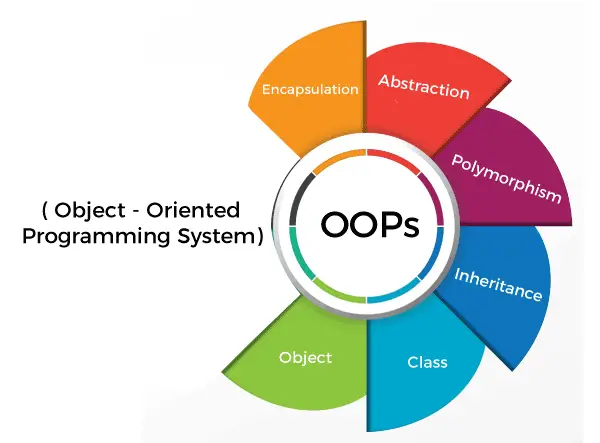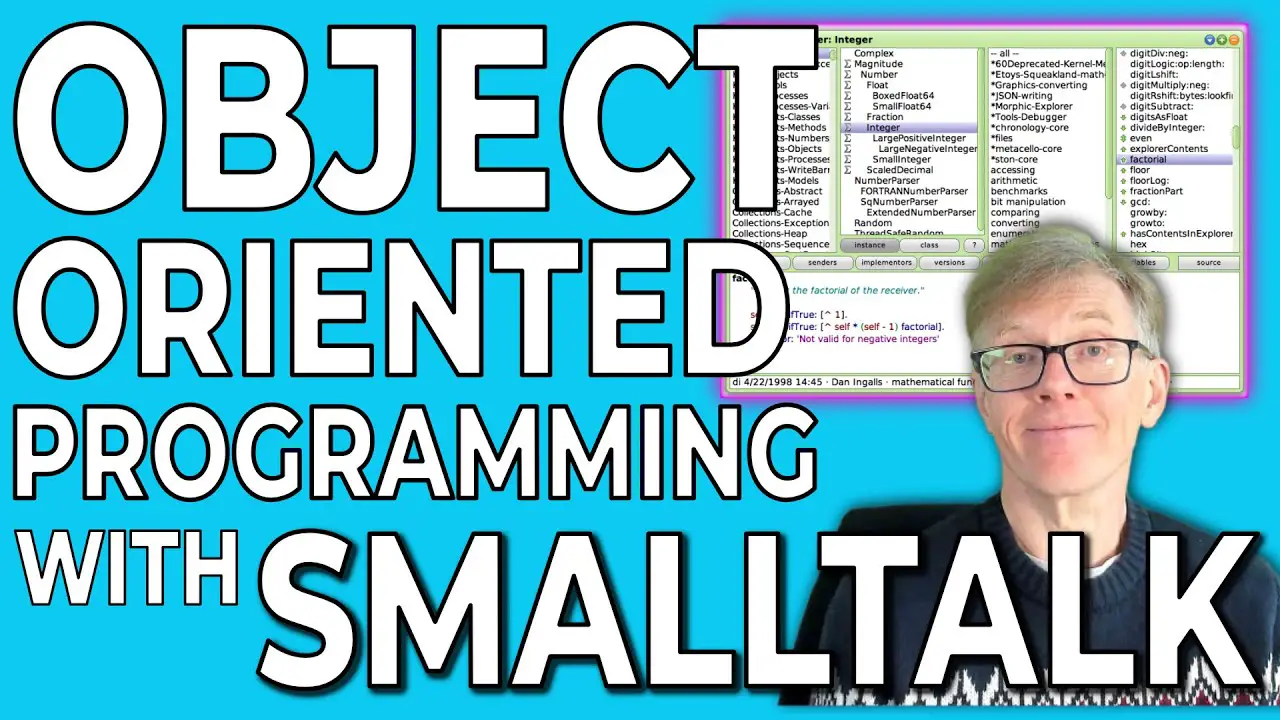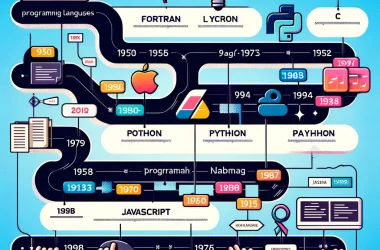Smalltalk’s Vision for Object-Oriented Programming

Smalltalk, developed by Alan Kay and his team at Xerox PARC in the 1970s, played a pivotal role in shaping the foundations of object-oriented programming (OOP). Its vision emphasized:

Encapsulation and Modularity:
- Objects encapsulate data and behavior, hiding their internal implementation from the outside world.
- Modules (classes) group related objects, providing a hierarchical organization for code.
Messaging and Dynamics:
- Objects communicate through message passing, where a sender object sends a message that triggers an action in a receiver object.
- Objects’ behavior can change dynamically at runtime, allowing for flexibility and customization.
Uniformity and Simplicity:
- Everything in Smalltalk is an object, including classes, methods, and data.
- The syntax is concise and intuitive, making it easier to understand and write code.
Openness and Extensibility:
- Smalltalk is open-source and extensible, allowing for user-defined classes and modifications to the language itself.
- This fostered a vibrant community of contributors and developers.
Metaprogramming:
- Smalltalk provided powerful metaprogramming capabilities, enabling programmers to inspect and manipulate the structure and behavior of objects at runtime.
- This allowed for advanced features such as reflection, introspections, and code generation.
Graphical User Interfaces (GUIs):
- Smalltalk was designed to facilitate GUI development, with built-in support for graphical objects, windows, and event handling.
- This made it instrumental in the creation of some of the earliest graphical environments.
Other Key Principles:
- Object-Identity: Objects have unique identities, preserving their state even when shared.
- Inheritance and Polymorphism: Classes can inherit from superclasses, allowing for code reuse and extensibility.
- Dynamic Binding: Message calls are resolved dynamically at runtime, enabling late binding and handling of different object types at the same time.
Smalltalk’s vision for OOP has had a profound influence on modern programming languages and software development practices. Its emphasis on encapsulation, messaging, uniformity, and extensibility has shaped the way we design, build, and maintain software systems today.## [Smalltalk’s Vision For Object-oriented Programming]
Executive Summary
Smalltalk is a pioneering object-oriented programming (OOP) language that has had a profound impact on the development of modern software engineering. Its unique design principles and powerful features embody a compelling vision for OOP, emphasizing simplicity, expressiveness, and flexibility. This article delves into the core concepts and benefits of Smalltalk’s OOP paradigm, exploring its key subtopics and providing insights into its enduring legacy in software development.
Introduction
Smalltalk emerged in the 1970s as a revolutionary approach to software design, introducing a paradigm shift towards object-oriented principles. Its creators, led by Alan Kay, sought to create a language that mirrored the fundamental structures of the real world, enabling developers to build robust and maintainable applications.
FAQs
- What is the core principle of Smalltalk’s OOP vision?
- Encapsulation, where data and methods are bundled together into objects, promoting modularity and information hiding.
- How does Smalltalk differ from other OOP languages?
- Its pure object-oriented design, where everything is represented as objects, including primitive data types and control structures.
- What are the benefits of using Smalltalk for OOP development?
- Improved code readability, maintainability, extensibility, and reusability.
Key Subtopics
1. Objects and Classes
- Objects represent real-world entities and encapsulate data and behavior.
- Classes define the blueprint for objects, specifying their structure and behavior.
- Inheritance enables code reuse and extensibility by allowing subclasses to inherit properties and methods from parent classes.
2. Messaging
- Objects communicate through messages, which are method invocations.
- Messages specify the recipient object and the method to be executed.
- Dynamic binding allows objects to respond to messages based on their current state, enabling polymorphism.
3. Reflection and Metaprogramming
- Smalltalk provides powerful metaprogramming capabilities through reflection.
- Developers can inspect and manipulate objects and classes at runtime, enabling dynamic code modification and extensibility.
- Metaclasses allow the creation of custom classes with specialized behavior.
4. Closures and Blocks
- Closures are blocks of code that can be passed as arguments to methods.
- They capture the current execution context, enabling access to local variables and creating flexible and reusable code constructs.
5. Image-Based Development
- Smalltalk applications are stored as images, which contain the complete state of the system.
- Images enable fast startup times, persistence, and debugging capabilities.
- Live programming allows for real-time code modifications while the application is running.
Conclusion
Smalltalk’s vision for OOP has revolutionized software development, providing a powerful and elegant paradigm for building robust and maintainable applications. Its emphasis on encapsulation, messaging, reflection, and image-based development has paved the way for modern OOP languages and continues to influence the evolution of software engineering. By embracing the Smalltalk philosophy, developers can unlock the full potential of OOP and create software that is both expressive and efficient.
Keyword Tags
- Object-oriented programming
- Encapsulation
- Messaging
- Reflection
- Smalltalk

